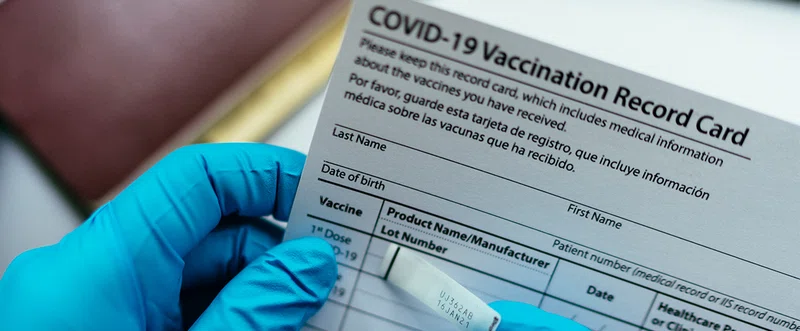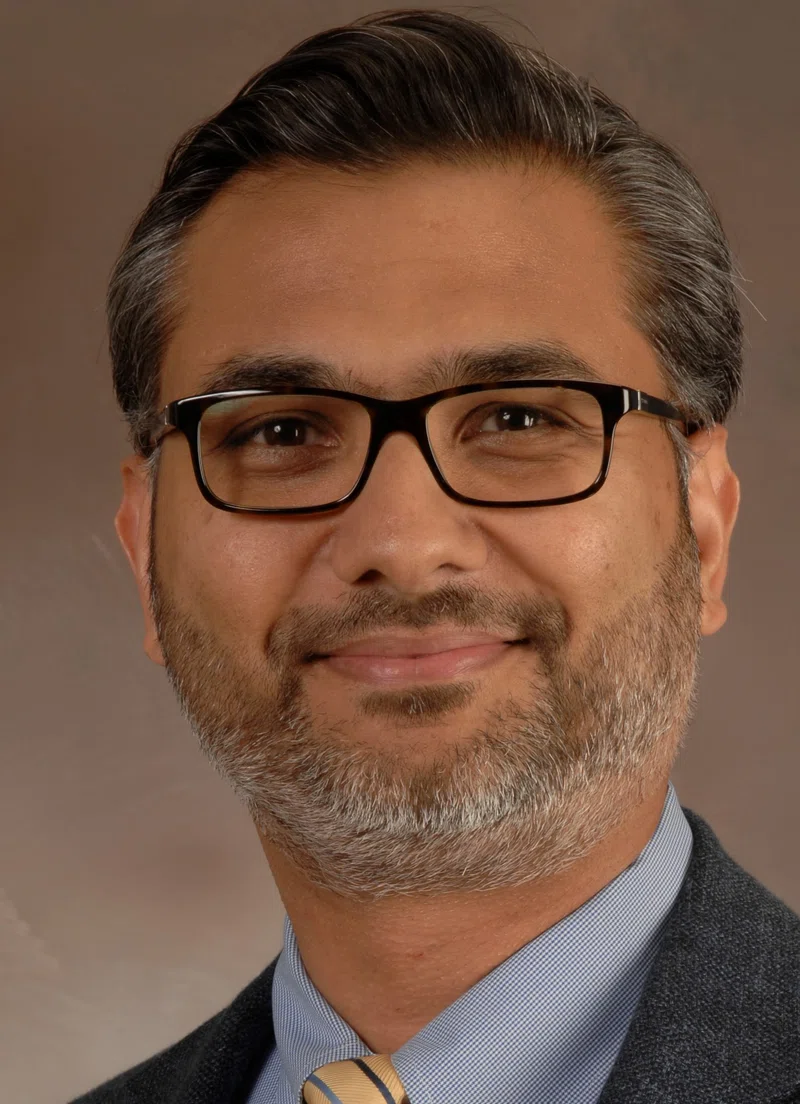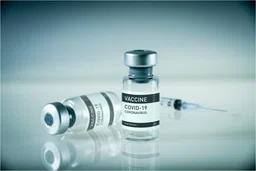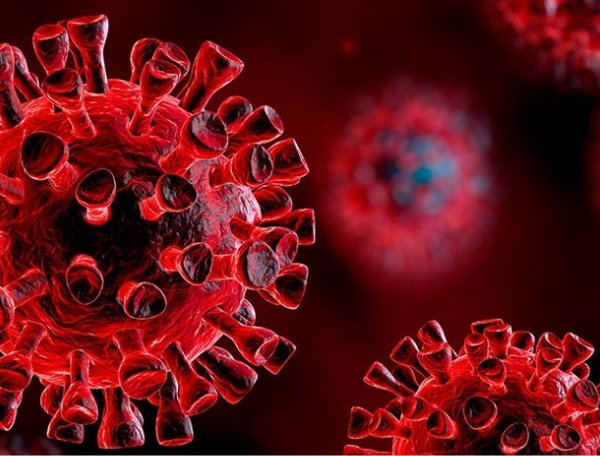


Outcomes Research
At one-year anniversary of COVID-19 vaccines, CURATOR data still producing vital contributions

December is the one-year anniversary of the release of the Moderna and Pfizer SARS-CoV-2 virus vaccines, which completely changed the unfolding narrative of COVID-19's impact on the world.
March 2020 became a month of profound change for most of the United States as the emergent virus took a firm hold on the country .While most of the healthcare world was scrambling to learn how to treat this novel virus, the Center for Outcomes Research at Houston Methodist was in a unique position.
Farhaan S. Vahidy, PhD, MBBS, MPH, Coneway Family Centennial Endowed Directorship in Quality and director, Outcomes, Center for Outcomes Research, arrived at Houston Methodist in January 2020. He had started assessing systems across Houston Methodist’s academic medical center and seven community hospitals to establish the infrastructure for a learning healthcare system (LHS).
The LHS would merge evidence-based medicine and practice-based evidence, relying on clinicians and researchers to provide and use big data through a continual process that achieves ever-improving patient care in a real-time healthcare setting.

Farhaan S. Vahidy, PhD, MBBS, MPHConeway Family Centennial Endowed Directorship in Quality and director, Outcomes, Center for Outcomes Research

Our commitment to our patients, to their families, to our communities and to the larger scientific audience demands that we always question what we do. We need to be in a constant state of analysis and understanding the consequences of our practices, our behaviors, and our policies, and be ready to adapt and change when the evidence presents itself. That is the basic idea. The stakes are high and we need to be making informed, evidence-based decisions and everyone needs to do their part in creating a healthcare system that has a culture of constant learning. To me, that's the important piece. Even beyond COVID, we need to tune our thought process and be ready to modify behaviors and practices. That's just how we operate - we make data-driven and evidence-based decisions and continuously evaluate ourselves to do what is best for our patients and their families, with the goal of constantly improving patient outcomes and experience

Farhaan S. Vahidy, PhD, MBBS, MPH
Coneway Family Centennial Endowed Directorship in Quality
and director, Outcomes, Center for Outcomes Research
While the pandemic put the initial, comprehensive vision of the LHS on hold, the mechanisms were in place for the creation of the COVID-19 Surveillance and Outcome Registry, or CURATOR. Vahidy led a cross-departmental team to create a database designed to digitize COVID-19-related health information, support multiple observational COVID-19 projects and share validated phenotypic data.
CURATOR capitalizes on several systemwide data sources, including Electronic Health Record (EHR); virtual ICU; CareSense (mobile-first digital platform designed to guide patients through their care); and imaging data warehouses. It holds health information for about half a million patients; data updates every Sunday.
As an academic hospital, Houston Methodist had the skills, expertise and leadership needed to fight the virus. But it’s also a complex health care system and, like many others, has information silos, said Vahidy. CURATOR aims to tear down those silos.
The database was organized under the Retrospective Research Task Force (RRTF). Dirk Sostman, MD, Houston Methodist chief academic officer, established the RRTF at the beginning of the pandemic, giving it full institutional support and autonomy to operationalize a bioinformatics pipeline to help prioritize and facilitate COVID-19 research. The RRTF collaborated with the Institutional Review Board (IRB), which approved the CURATOR research database to address operational needs, outcomes research and institutional reporting.
“Houston Methodist’s big data infrastructure and data engineering teams proved to be highly agile and adaptable, which made it possible to establish a robust COVID-19 analytics pipeline in literally weeks. The ability to generate and implement scientific evidence was phenomenal. We consider ourselves battle tested and have confidence in our capacity to respond quickly in the midst of a global pandemic, with the majority of the teams working remotely,” said Vahidy.
"The database draws on information collected from every individual tested for COVID-19 at Houston Methodist, as well as any information we have about that patient from before the pandemic began and/or after being tested."
CURATOR can then sort these individuals first by those who test positive and those who test negative. Categories can then be further subclassified by whether they were hospitalized — due to COVID-19 or another health condition — and whether they had encounters with Houston Methodist prior to the pandemic.
"Looking at the overall picture of a patient's health, even components unrelated to COVID-19, provides clinicians and researchers with very rich longitudinal data. This becomes an important control and is critical for elevating hypothesis generation and testing," said Vahidy.

Data gleaned from CURATOR already has made an impact. Outcomes show the team has been successful at sustaining lower mortality rates: National comparisons place Houston Methodist critical care team’s success rates among the highest in the nation.
Evidence-based comparisons between Houston’s first COVID-19 surge, March 13-May 15, 2020, and the resurgence, May 15-July 7, 2020, offered real time data about patients’ socio-demographics, diagnoses, treatments, suitability for enrollment in clinical trials, and outcomes.
The data highlights disparities within populations. Early on, CURATOR showed a disparity along socioeconomic and racial lines, with higher rates of infection among minorities. Data from the second surge showed a demographic shift toward a younger, predominantly Hispanic, and lower socioeconomic patient population with an overall lower comorbidity burden, ICU admission rate, and in-hospital mortality. This information is invaluable when it comes to community outreach, and it provides researchers innumerable hypothesis to explore, and Houston Methodist was among the first to raise the flag.
While COVID-19 information still is being input into the database, the CURATOR team is following the efficacy of the COVID-19 vaccines and long-term effects of the virus but it has turned its attention to other areas it believes CURATOR can deliver on.
The question has become, since only around 13% to 14% of the population has been infected by the virus, how has it impacted the other 85%? Researchers also have started using CURATOR’s data to look at how members of the older population, who have not been infected, have been affected since the pandemic began. Researchers have looked at vulnerable, older populations, especially those with cognitive impairment or dementia, or even mild cognitive impairment, not necessarily Alzheimer’s disease or dementia. The team is interested in learning what the regular care of all populations has been since the disruption of primary care - is there disparity in regular care since the pandemic? Early numbers indicate primary care visits decreased during the pandemic, so routine healthcare was not achieved.
The team will present their recent findings at the Texas Alzheimer's Research Council Symposium in January 2022 in Austin. They have also submitted a paper to Alzheimer's and Dementia that's currently under review. The team believes it has demonstrated, through data accessed through CURATOR, that this susceptible and vulnerable population has been disproportionately affected due to the loss of primary care and access to emergency care.
The team also is now beginning to evaluate not just acute care, but also chronic disease management. Hypertensive and diabetic patients and those with high cholesterol also need primary care for secondary prevention, and this care also has been disrupted. These hypotheses can directly be studied from CURATOR.
“From a data, bioinformatics pipeline development standpoint, what we have been able to do with CURATOR and COVID data is applicable across any clinical domain. So for instance, as a system we need to create cancer, cardiovascular or cerebrovascular disease registries, we have developed a framework on how to maximize the clinical data that we have and give it a structure and put it to use so that we can rapidly gain insights,” said Vahidy.
"I think Houston Methodist is unique in that we have an institutional understanding and commitment, at all levels of leadership, starting from the very top, of the importance of creating value from data. If that piece is missing in an organization, the technical advancement and implementation usually does not happen well. We not only have to maintain this; but we need to grow – both in depth, to enhance our bioinformatics pipeline and in breadth, to expand cross-institutionally. And therefore, the organizational behavioral part is extremely important.”
Farhaan S. Vahidy, PhD, MBBS, MPH, Coneway Family Centennial Endowed Directorship in Quality and director, Outcomes, Center for Outcomes Research
Erin Graham, December 2021







